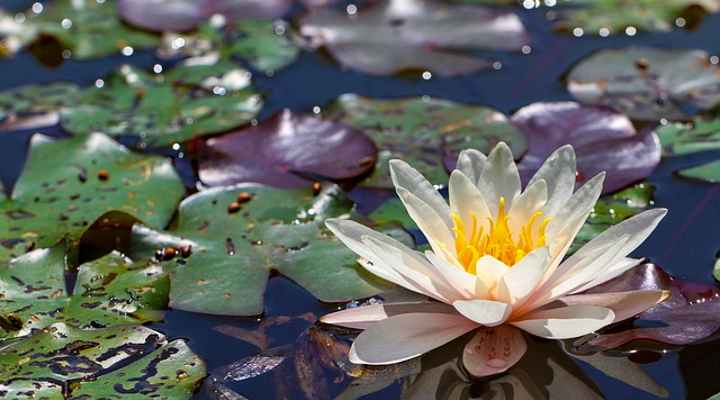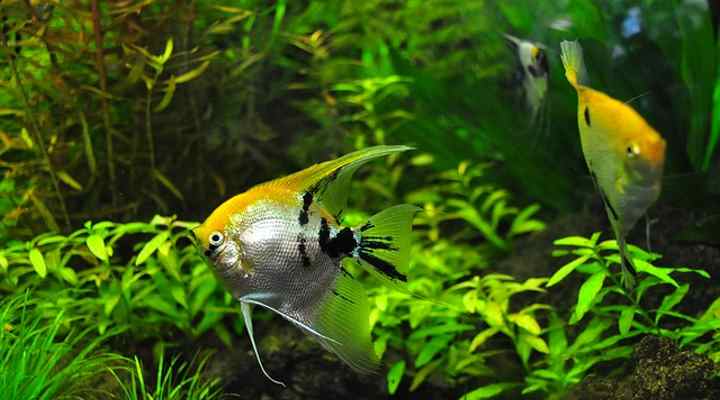Adding aquatic flowering plants to ponds, aquariums, water gardens, and jarrariums is a great way to enhance the aesthetic appeal of these water features. Apart from adding color and beauty to the environment, aquatic flowering plants also play a vital role in oxygenating the water in aquariums and fishponds.
In addition to their aesthetic appeal, the leaves of aquatic flowers serve as a source of food and shelter for fish. The most popular aquatic flowers include exotic lotus flowers, stunning water lilies, and delicate water poppies. These aquatic plants grow with their roots anchored in the water and their leaves and flowers buoyed on the surface.
This article covers the best flowering plants for water-based environments, highlighting which flowers are ideal for ponds and those that are not suitable for exotic freshwater fish tanks.
What Are Aquatic Flowers?
Aquatic flowers are beautiful blossoms that can be found in various aquatic environments. Plants that grow in water are known as hydrophytes or aquatic macrophytes. Aquatic flowering plants can grow along the edges of lakes, streams, or ponds, or they can exist submerged in water, floating on it, or near bodies of water. Some flowering aquatic plants, such as water lilies, live entirely underwater. Other types of plants have root systems that prefer damp, saturated soil, such as those found near the edges of water bodies.
Water lilies, the largest of all aquatic flowers, have roots that develop in the soil at the bottom of ponds. Long stems grow up to the surface with the assistance of underwater growth. Large, flat green leaves and stunning flowers float elegantly on the water’s surface.
Growing Indoor Aquatic Flowers in Water
Aquatic plants that flower in indoor ponds, water gardens, or tanks should be able to thrive in low light conditions. These indoor aquatic flowers are typically rooted in the substrate at the bottom of the tank, where they absorb nutrients from the water. Most aquatic plants bloom underwater, with the exception of ferns and mosses.
Some blooming plants, such as anubias and sword plants, can flower while fully submerged in water. Others, like water lilies, will float on the water’s surface. When cultivating blooming aquatic plants indoors, it’s important to ensure that lighting, fertilization, substrate, and water requirements are all met.
Maintaining the appropriate water parameters in an aquarium or indoor pond is crucial not only for promoting plant growth and flowering but also for ensuring the health of fish and other aquatic life.
Aquatic Flowers for Growing Indoors (With Pictures and Names)
For your water garden, fish tank, or indoor pond, here are some of the best indoor aquatic flowers.
Amazon Sword (Echinodorus)
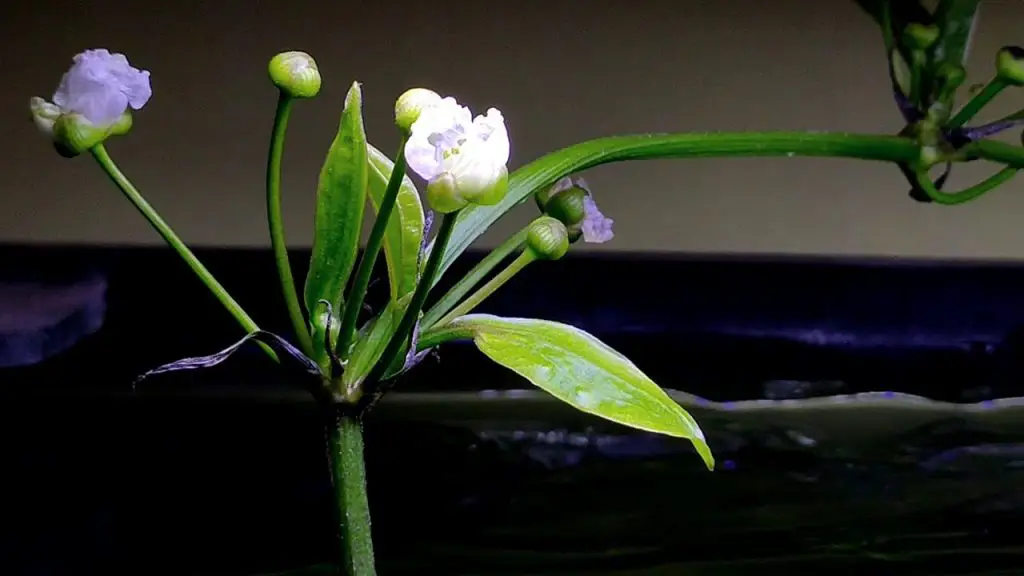
Amazon swords are a common and easy-to-care-for type of indoor flowering plant that blooms with small white flowers that grow in water. These low-light plants have long, triangular leaves and tiny flowers that bloom on long, underwater stems.
They are annual or perennial plants that are popular for aquariums due to their bushy foliage and larger sword plants that have floating leaves. They grow tall in aquariums and are best grown in the back or center of the tank. Amazon swords require tropical or sub-tropical water temperatures and benefit from additional fertilizers to promote robust growth and regular blooming.
Anubias
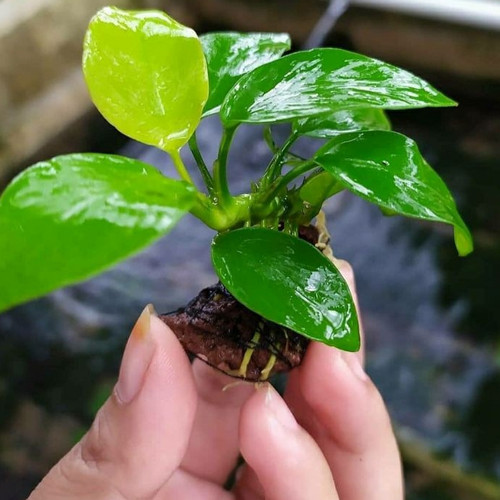
Anubias aquatic plants thrive in low lighting and can produce submerged flowers, unlike most aquatic plants. Anubias barteri, pictured here, has small, creamy-white flowers that resemble underwater peace lilies. The leaf shape of Anubias plants varies depending on the species, but they are generally low-maintenance and suitable for low-light aquatic environments.
Keeping Anubias in an aquarium is simple as their broad, long leaves provide shade and oxygen for fish. Additionally, herbivorous fish do not eat the leaves, making Anubias plants an excellent choice for fish tanks. They are suitable for tanks with tetras, guppies, goldfish, or cichlids.
Anubias plants can be grown both above and below water, making them ideal for use in paludariums. Paludariums are unique environments that combine terrestrial and aquatic plants.
Fanwort (Cabomba Aquatica)
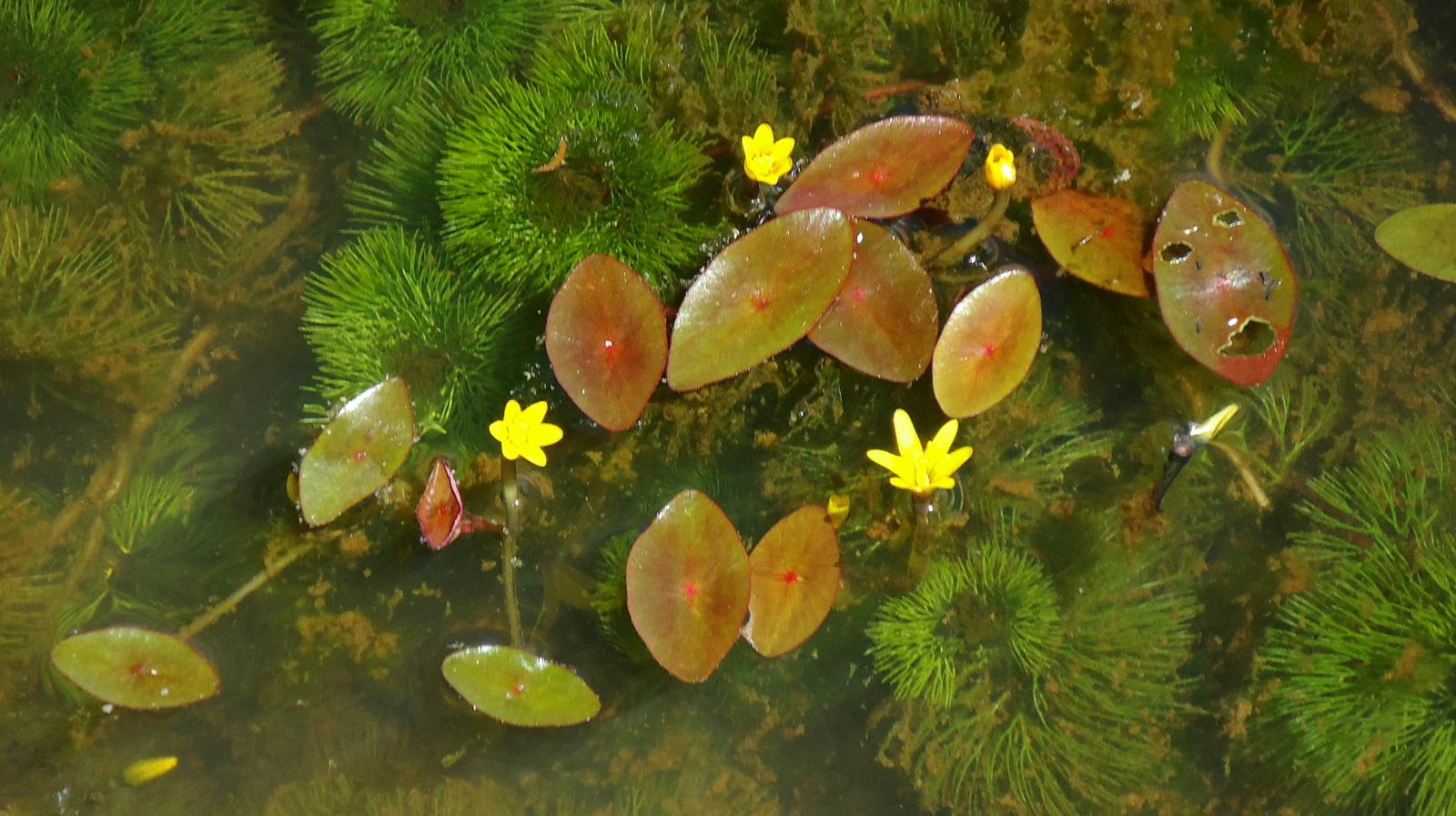
Cabomba Aquatica is an aquatic plant that is often seen with stems protruding from the water’s surface when it blooms. This plant, which is popular in aquariums, produces small yellow flowers. The plant can either float or be rooted in the aquarium substrate, and its feathery leaves are perfect for creating a backdrop in the tank. The soft stems of Cabomba Aquatica can grow up to 20″ (50 cm) in length, and it thrives in water with low light. Although it is an excellent flowering plant for aquariums, it may not be suitable for all types of aquarium fish because the delicate leaves can be consumed by goldfish and cichlids.
Aquatic Flowers That Grow in Ponds Outdoors (With Pictures and Names)
Ponds, lakes, streams, and other bodies of water are home to a variety of flowers. Flowers growing in water can enhance your garden’s aquatic landscape if you have a garden pool, fishpond, or other water feature. Here are some of the greatest water flowers to grow outside.
Fragrant Water Lily Flower (Nymphaea odorata)
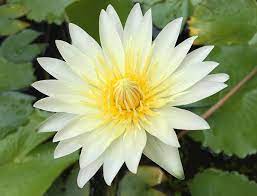
Water lilies are one of the most stunning blooming aquatic plants that thrive in ponds and water gardens. They are known for their large, fragrant, white flowers and broad, flat, green leaves that float on the water’s surface. These flowering plants are perennials that require full sunlight and can grow up to 2 feet (0.6 meters) deep in ponds, water gardens, or bogs.
Water lilies have roots that grow in wet soil and large lily pads that can spread up to 12 inches (30 cm) wide. The flowers grow on tall stalks that stand above the water surface. Some smaller water lily species can be kept in aquariums, but they require adequate light (around 10 hours a day) to thrive and produce flowers.
American Lotus (Nelumbo lutea)
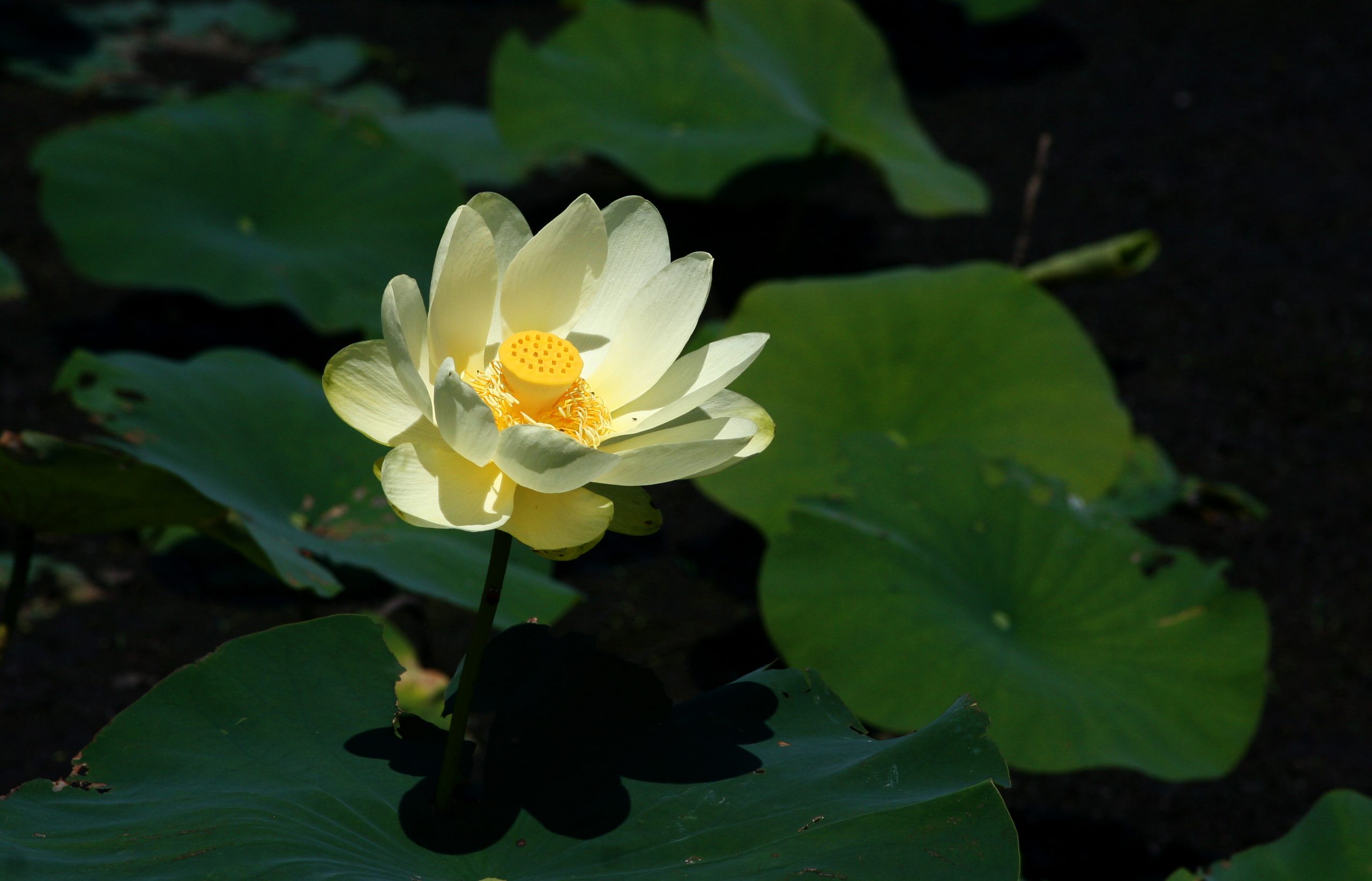
American lotus is a beautiful aquatic plant that grows well in full sun. Its umbrella-like leaves can grow up to 2 feet in diameter, and large pale yellow blooms appear on upright stems from water. The lotus flowers can grow up to 1 foot wide, making them a striking feature in ponds and water gardens.
Lotus flowers grow from tuberous roots that are submerged in pond beds, and they bloom during the summer in full sun. They are suitable for growing in small garden ponds, water gardens, and outdoor fishponds. Flower stalks can reach a height of 3 to 6 feet.
To keep lotus flowers from becoming invasive, it’s best to grow them in pots in ponds. They can also be planted around the edges of the pond. If you’re growing lotus plants in a shallow pond less than 6 inches deep, move the container to deeper water during the winter. American lotus flowers thrive in USDA zones 4 through 11.
Water Hawthorn (Aponogeton distachyos)

Water hawthorn or cape pondweed is a floating aquatic plant that features blossoms emerging from the water’s surface. This plant is an excellent choice for ponds, fishponds, and water gardens. The floating leaves and flowers create a cover of green foliage and white flowers that rise above the water surface.
Water hawthorn plants have narrow oval leaves that grow up to 10 inches (25 cm) in length. The sweetly scented flowers are clustered on stiff stems and have delicate yellowish-white petals.
Water hawthorn plants thrive in garden ponds that are 18 inches (0.5 m) deep and receive full sun or partial shade. Aponogeton species are also popular aquarium plants that bloom.
Water Hyacinth (Eichhornia crassipes)
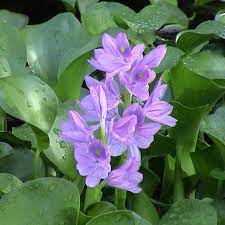
Water hyacinth is a gorgeous floating aquatic flower that is adorned with beautiful pink, violet, or white blooms in outdoor ponds. The vibrant spikes of the blooms emerge from thick glossy leaves. The leaves and flowers float on the surface of the water where they thrive and expand quickly.
These aquatic plants are capable of invading ponds and taking over the ecosystem. When the pond cover becomes too thick, water hyacinths can block the sunlight and starve the pond of algae and plankton. If you have fish in your pond, aquatic hyacinths should be grown in floating baskets. Water hyacinths prefer full sun in USDA zones 9 to 11.
Pickerelweed (Pontederia cordata)
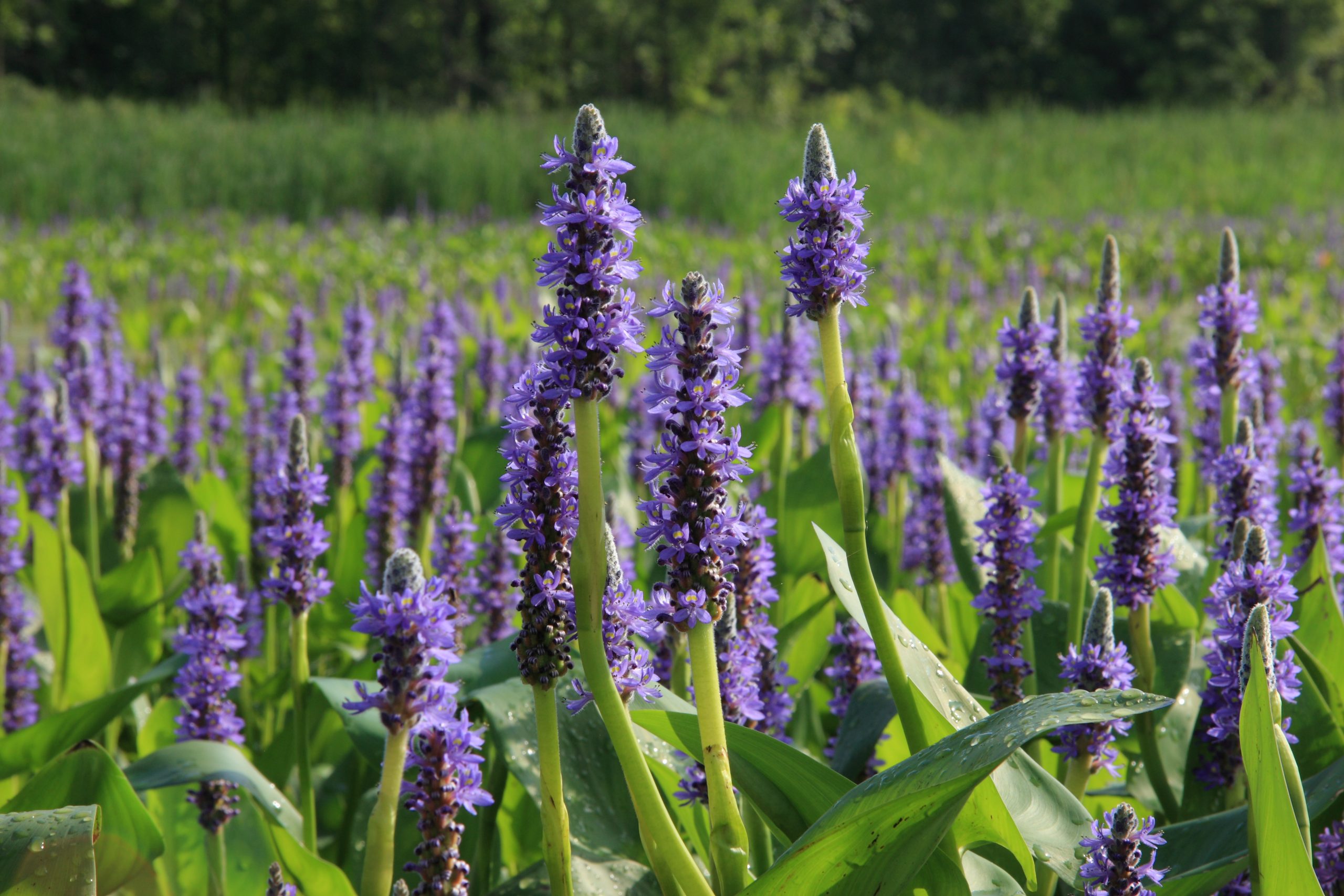
Pickerelweed is an aquatic flowering plant that thrives in freshwater habitats such as ponds, lakes, rivers, and wetlands. Its striking purple blooms emerge in the late summer season, adding color to the aquatic landscape.
Pickerelweed is an emergent plant that has roots that grow in submerged soil, while its leaves and flowers grow above the water’s surface. Its giant green leaves provide shade and shelter for fish, while the plant produces clusters of small purple flowers.
Pickerelweed grows vigorously in marshy, wet areas with full sun exposure. It is suitable for growing in and around garden ponds, and can also be grown in water-filled containers to control its spread. It is an excellent choice for adding flowering plants to fishponds, providing both aesthetic appeal and habitat for fish.
The plant’s thick foliage also serves as a protective barrier for freshwater fish, such as pickerel or pike. Pickerelweed can grow in USDA zones 3 to 10, in aquatic and muddy environments.
Broadleaf Arrowhead (Sagittaria latifolia)
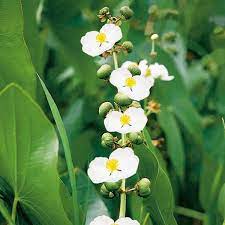
Broadleaf arrowhead is a beautiful marginal aquatic plant that blooms in the summer months. This perennial plant can be found near lakes, rivers, and ponds, and is known for its white flowers with yellow centers.
The broadleaf arrowhead plant has arrow-shaped leaves and produces white flowers that bloom on top of the water’s surface. The plant can grow in water that is up to 12 inches (30 cm) deep and can reach heights of 1 to 4 feet (0.3 to 1.2 meters). Delicate flowers bloom on 4-foot (1.2 m) tall stems.
The arrowhead leaves of this plant can grow up to 30 cm in length. Broadleaf arrowhead plants can be sown in USDA zones 5 through 11. These easy-to-grow aquatic plants require full sun and moist loamy soil to thrive.
Water Poppy (Hydrocleys nymphoides)
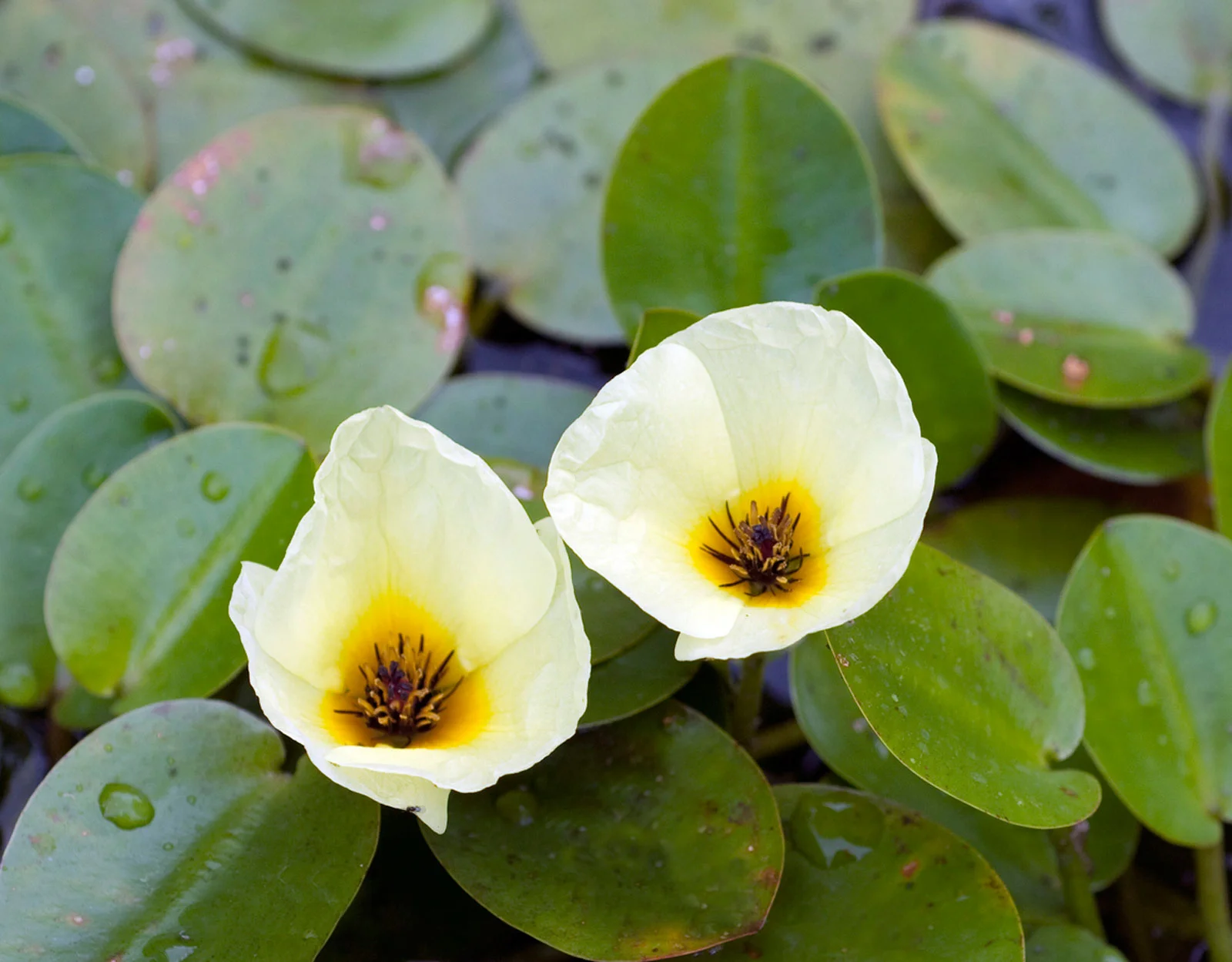
Water poppies are a type of marginal aquatic plant that can be found floating in ponds or aquatic environments. They have round, broad leaves and produce small yellow flowers on upright stems during the summer months. Water poppies prefer shallow water that is around 6 inches (15 centimeters) deep and can also be grown along the edges of ponds or water gardens. These plants thrive in warmer climates and bloom when the temperature rises above 70°F (21°C). Water poppies are most commonly found in USDA zones 9 through
Water Iris (Iris laevigata)
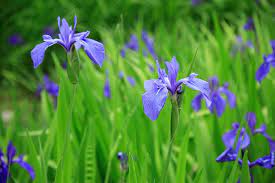
Water irises are an aquatic perennial with beautiful purple-blue flowers that grow on tall stems. The blooms are 3 feet tall and have three large petals that are around 4 inches wide. The plants have sword-shaped leaves that are lime-green in color. Iris laevigata is the water-loving plant that grows in ponds, mixed aquatic borders, or beside streams. It is an excellent option for planting around pond edges.
The plant thrives in wet, rich soil with full sun or partial shade. You can also plant the irises’ roots completely submerged in water as an emergent aquatic plant.
Calla Lilies (Zantedeschia aethiopica)
Calla lilies thrive in aquatic environments and can be grown in shallow water around the edges of ponds. The large white flowers of calla lilies have a bright yellow spadix and are complemented by glossy green leaves. They bloom in water from spring until late summer.
Calla lilies are a great choice for planting as marginal pond plants. These moisture-loving flowers can grow in up to 12 inches (30 cm) of water at the edge of ponds or water gardens, reaching heights of 2 to 3 feet (0.6 to 1 meter) above the water’s surface.
Calla lilies are hardy perennial plants that grow well in USDA zones 7–11. If you live in colder regions, you can grow calla lilies in containers and overwinter them indoors. In addition to being stunning aquatic flowers, calla lilies are also excellent patio plants, deck plants, and mixed border plants.
Water Forget-Me-Not (Myosotis scorpioides)
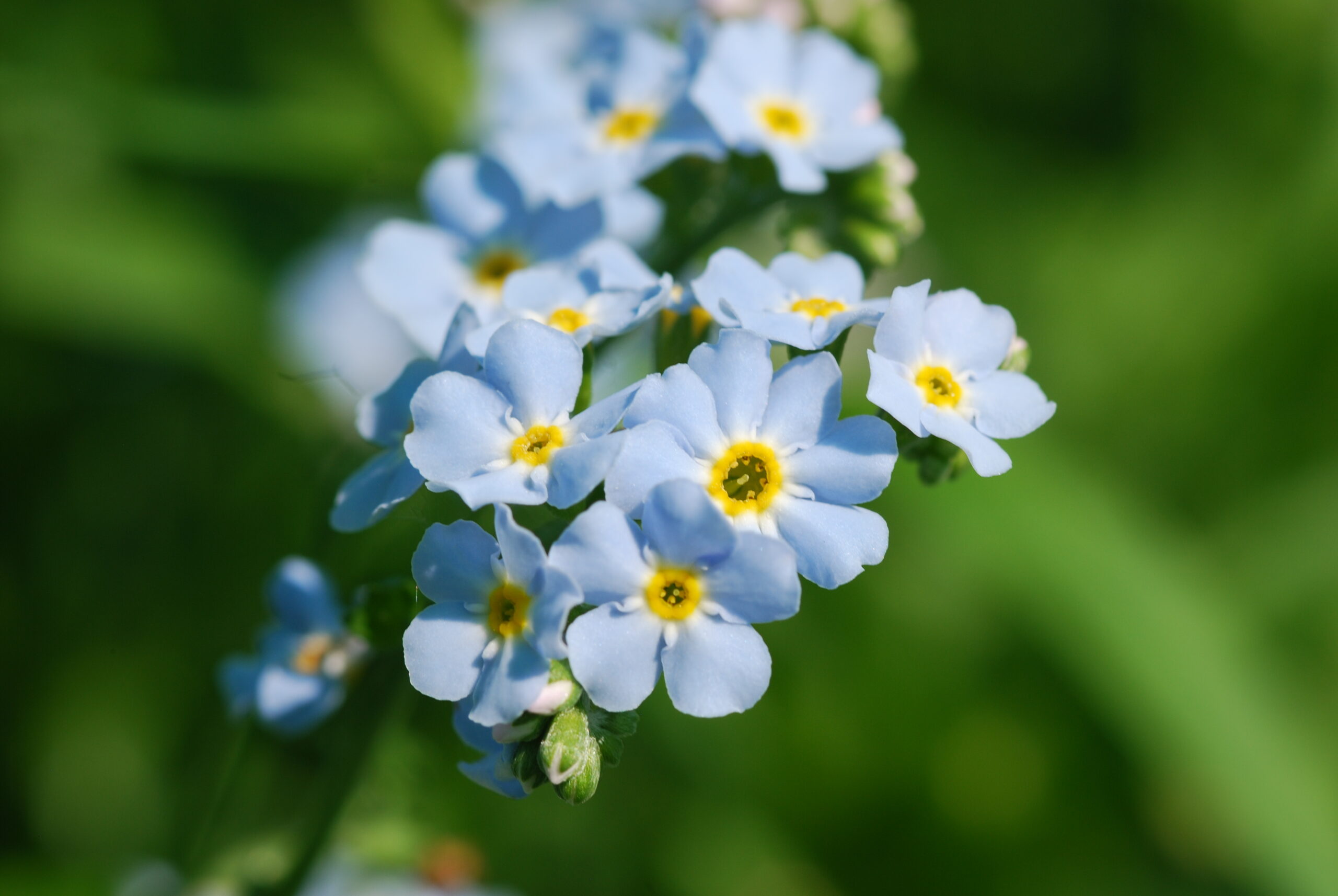
Water forget-me-not is a delicate aquatic plant with pale blue flowers that thrives in wet environments and makes an excellent marginal pond plant. In the summer, forget-me-not plants produce tiny light blue sprays of flowers. The plant’s semi-evergreen leaves make it distinct from other aquatic plants. Water forget-me-nots thrive in poorly-drained soil and spread rapidly.
Bogs, ponds, water gardens, and stream banks are perfect habitats for this easy-to-grow plant. Water forget-me-nots can be grown submerged in water or in moist, soggy soil, forming floating rafts. This flowering aquatic plant prefers full sun or partial shade and is also known as scorpion grass. Myosotis scorpioides is an excellent ground cover plant for full sun, and it thrives near bodies of water. Water forget-me-nots are a great option for covering bare ground with poor drainage and are ideal for growing in zones 5 through 9.
Mosaic Flower (Lugwigia sedoides)
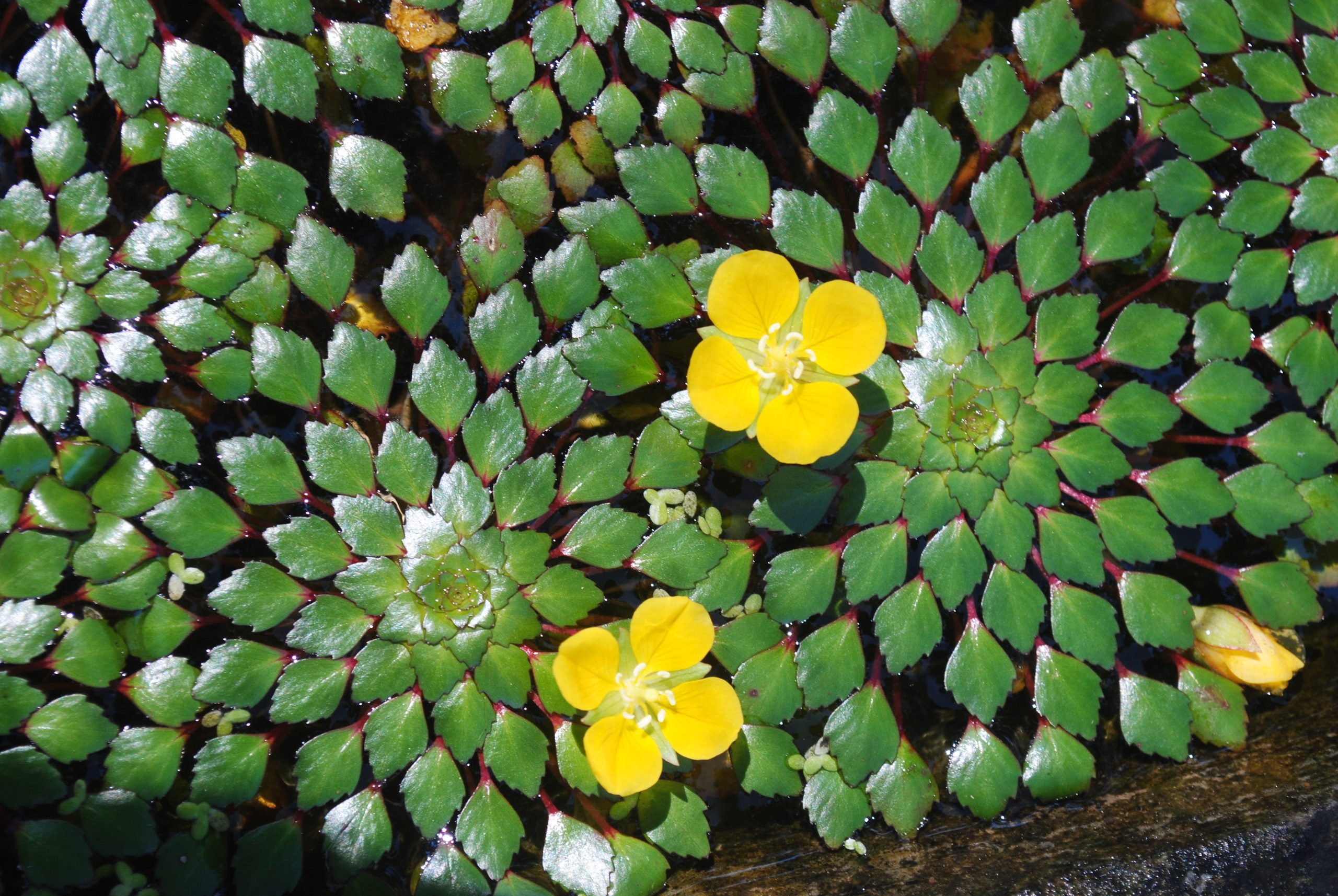
False loosestrife, also known as mosaic flowers, are perennial floating plants that bloom during the summer months in ponds, marshes, and lakes. The plant has diamond-shaped leaves that cluster together, creating a mosaic pattern. Little yellow flowers bloom amongst the foliage, providing a beautiful addition to the pond. These plants are best suited for tropical climates and can be grown in containers in ponds up to 1.5 feet deep. They thrive in zones 10 and 11 and require full sun for optimal growth.

